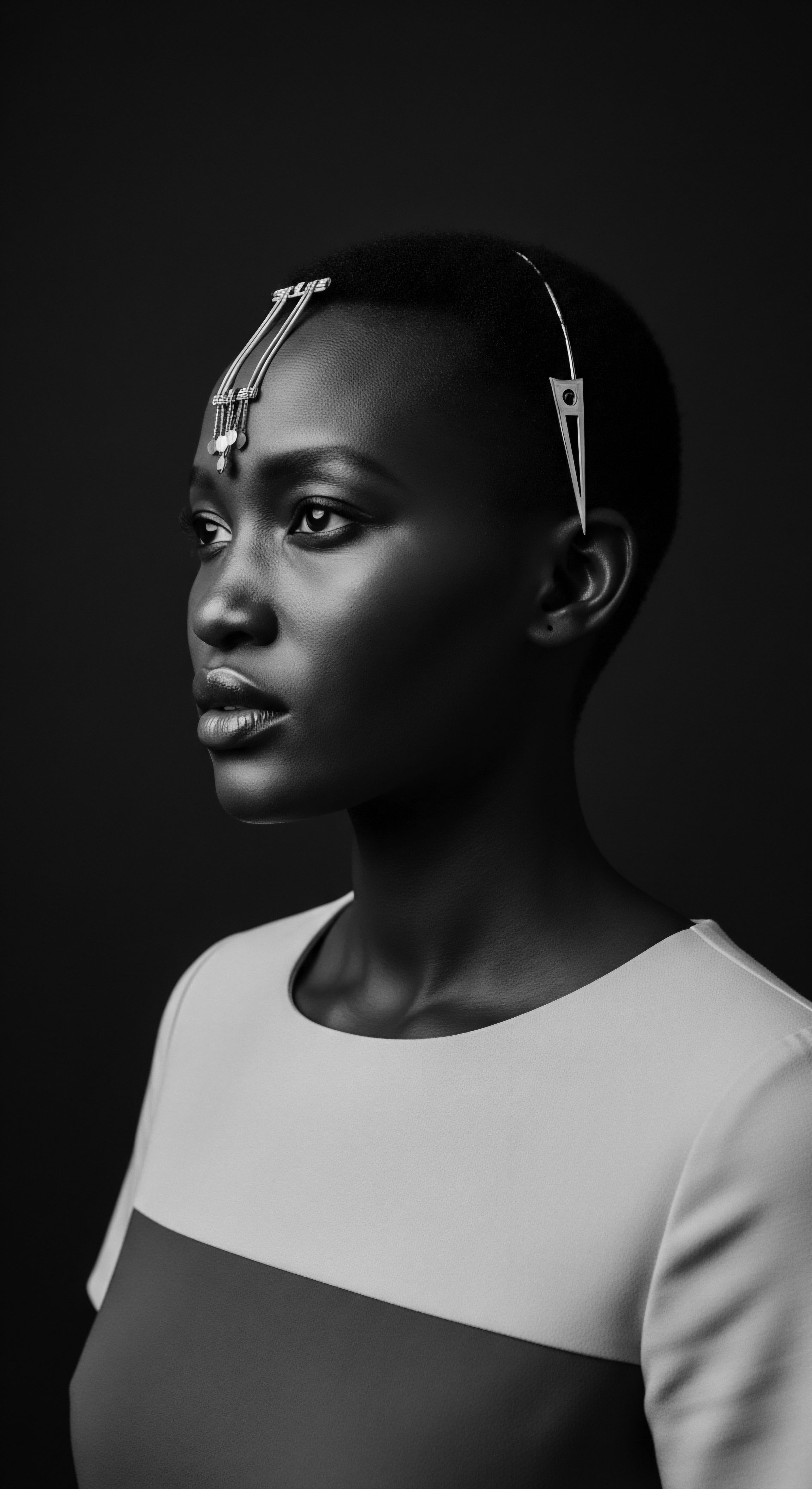
Fundamentals
The term ‘Hair Discrimination Research’ delineates the systematic inquiry into biases, prejudices, and systemic disadvantages experienced by individuals based on their hair. This field of study specifically scrutinizes how hair texture, style, or perceived adherence to dominant beauty standards contribute to marginalization. It is a vital area of exploration, particularly when considering the deep cultural and historical ties of hair within Black and mixed-race communities.
The meaning of this research extends beyond mere aesthetics, reaching into the profound connections between hair and identity, social standing, and well-being. This scholarly pursuit clarifies the mechanisms through which hair becomes a site of oppression, examining both overt acts of prejudice and subtle, often unconscious, biases that permeate societal structures.
This investigation reveals that hair discrimination is not a contemporary phenomenon; its roots stretch back through generations, deeply embedded in historical power dynamics and the imposition of Eurocentric beauty ideals. Understanding its fundamental meaning requires an acknowledgment of this historical lineage. The research seeks to identify patterns, measure impacts, and ultimately inform interventions that champion equity and respect for all hair types, especially those historically denigrated. It offers an explanation for why certain hair presentations, particularly those naturally occurring in textured hair, have been deemed “unprofessional” or “unruly” in various social settings, from educational institutions to professional environments.
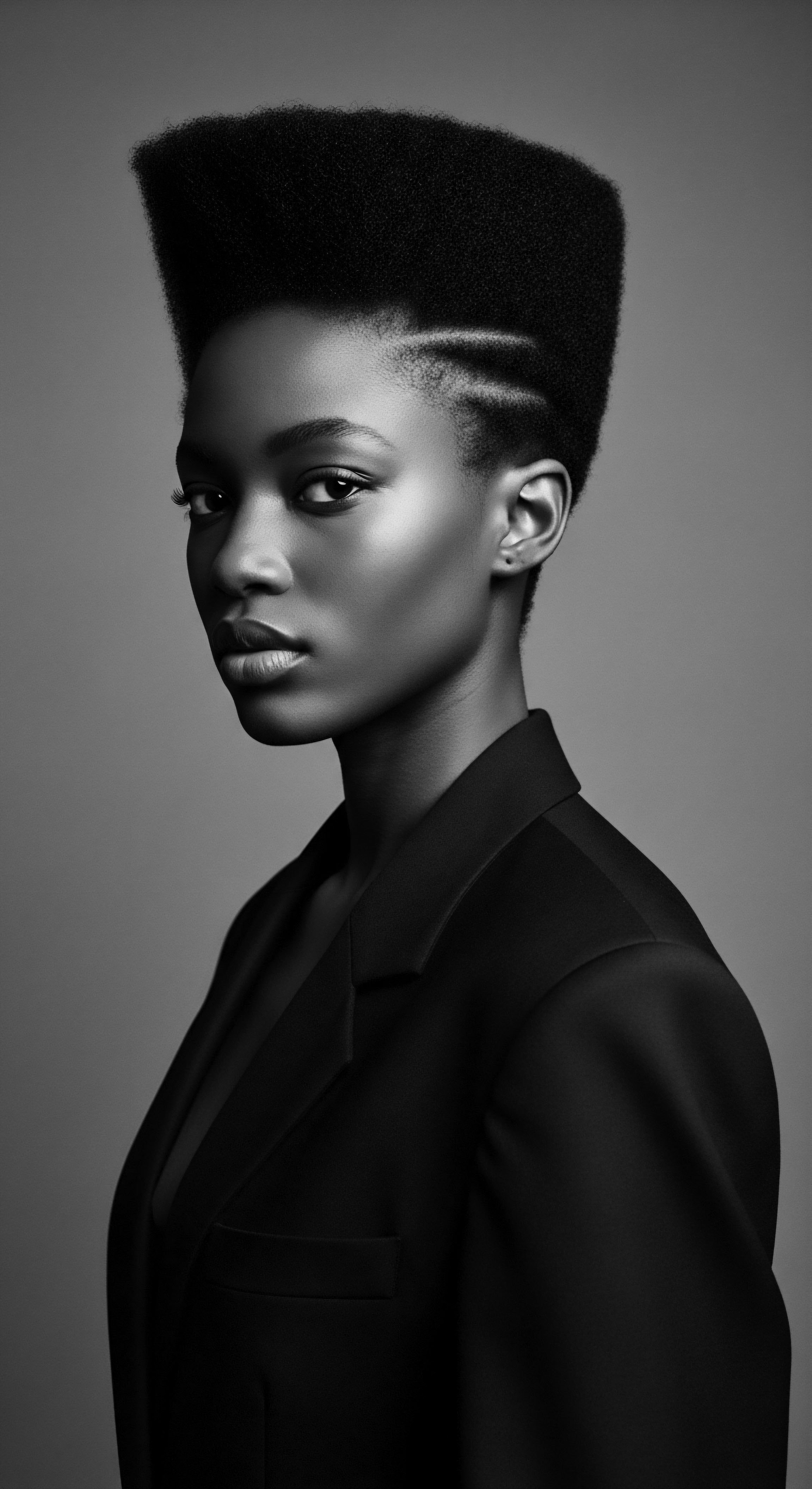
Historical Echoes of Hair Prejudice
From the earliest colonial encounters, a deliberate devaluation of Black hair textures began to take root, creating a lasting legacy that the Hair Discrimination Research endeavors to unravel. European colonizers often viewed African hair as “savage” or “unclean,” a stark contrast to their own straight or wavy hair, which they positioned as the epitome of beauty and civilization. This imposed standard was not merely an aesthetic preference; it served as a tool of control and subjugation, designed to strip enslaved and colonized peoples of their inherent dignity and connection to ancestral practices. The meaning of hair transformed from a symbol of status, spirituality, and community within African societies to a marker of inferiority under oppressive regimes.
The historical delineation of “good” versus “bad” hair, where “good” hair approximated European textures and “bad” hair referred to coily or kinky textures, is a direct outcome of this legacy. This insidious classification system has persisted for centuries, shaping self-perception and societal expectations within Black and mixed-race communities. The Hair Discrimination Research provides a framework for understanding how these historical perceptions continue to manifest in contemporary discriminatory practices, influencing everything from school dress codes to corporate grooming policies. This field of study helps to clarify the enduring impact of these historical narratives on present-day experiences of hair-based bias.
Hair Discrimination Research reveals how societal perceptions of hair, especially textured hair, are deeply rooted in historical power imbalances and colonial legacies.
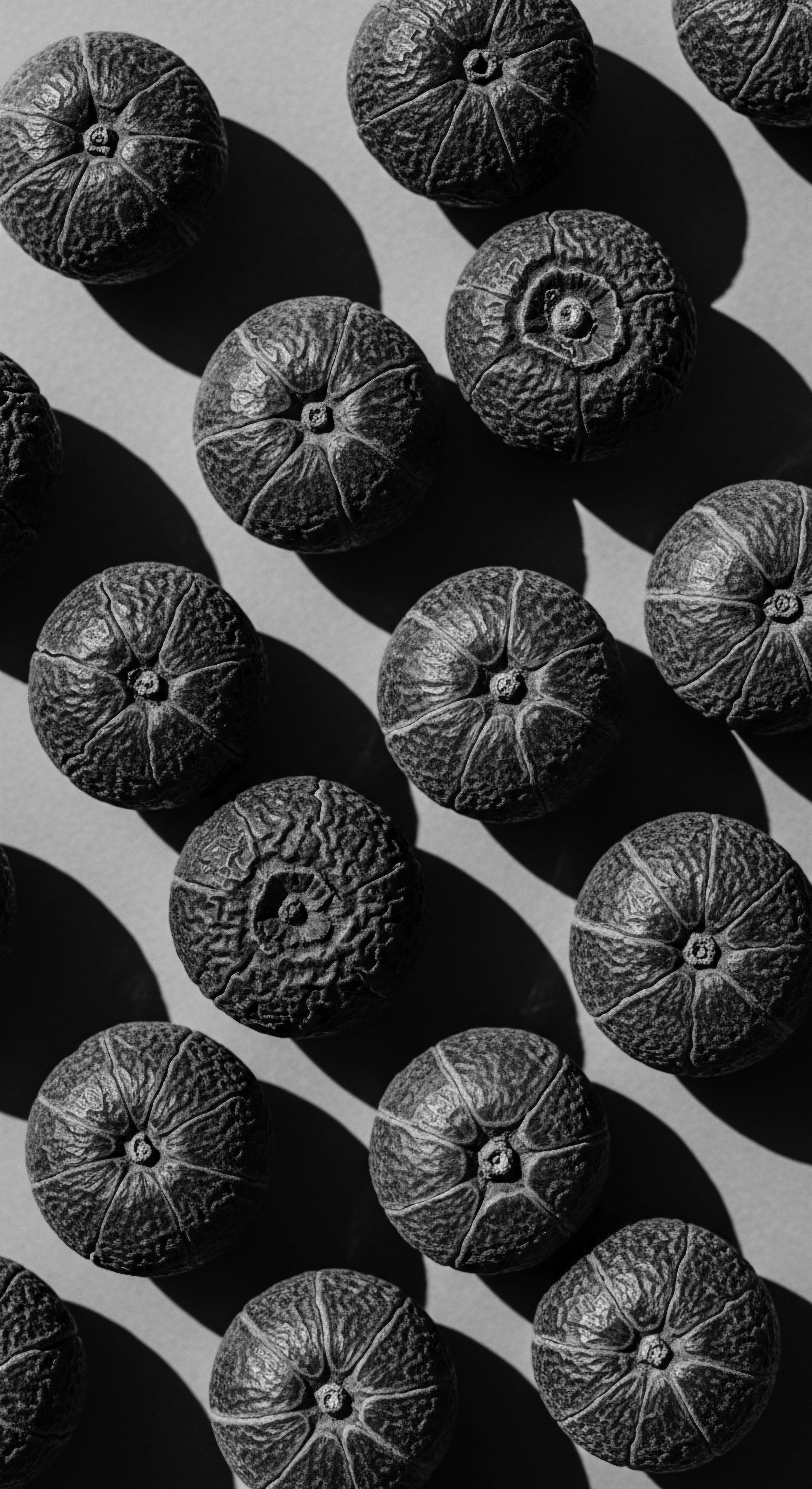
Early Manifestations of Bias
In various historical contexts, the policing of textured hair was overt and legally sanctioned. Consider the 18th-century Tignon Laws enacted in Louisiana, which compelled Black women to cover their hair with a tignon or scarf. This measure aimed to suppress their elaborate, often adorned, hairstyles that conveyed status and beauty, particularly in a society where free women of color sometimes achieved significant economic standing. The laws sought to diminish their public presence and enforce a visual hierarchy, reinforcing the notion of their subordinate status.
The Hair Discrimination Research examines such historical precedents, providing a clearer understanding of the systematic efforts to control and devalue Black hair. These historical policies offer profound insights into the long-standing societal attempts to regulate identity through appearance.
The systematic denial of opportunities based on hair, whether through formal policies or informal social pressures, became a pervasive reality for individuals with textured hair. This denial was not merely about individual preferences; it reflected deeply ingrained societal biases that equated certain hair textures with a lack of professionalism, intelligence, or social acceptability. The research in this domain investigates these early incidences, tracing the evolution of discriminatory practices and their impact across different eras. It illuminates how these historical patterns set the stage for the contemporary challenges faced by those with hair that deviates from dominant norms.
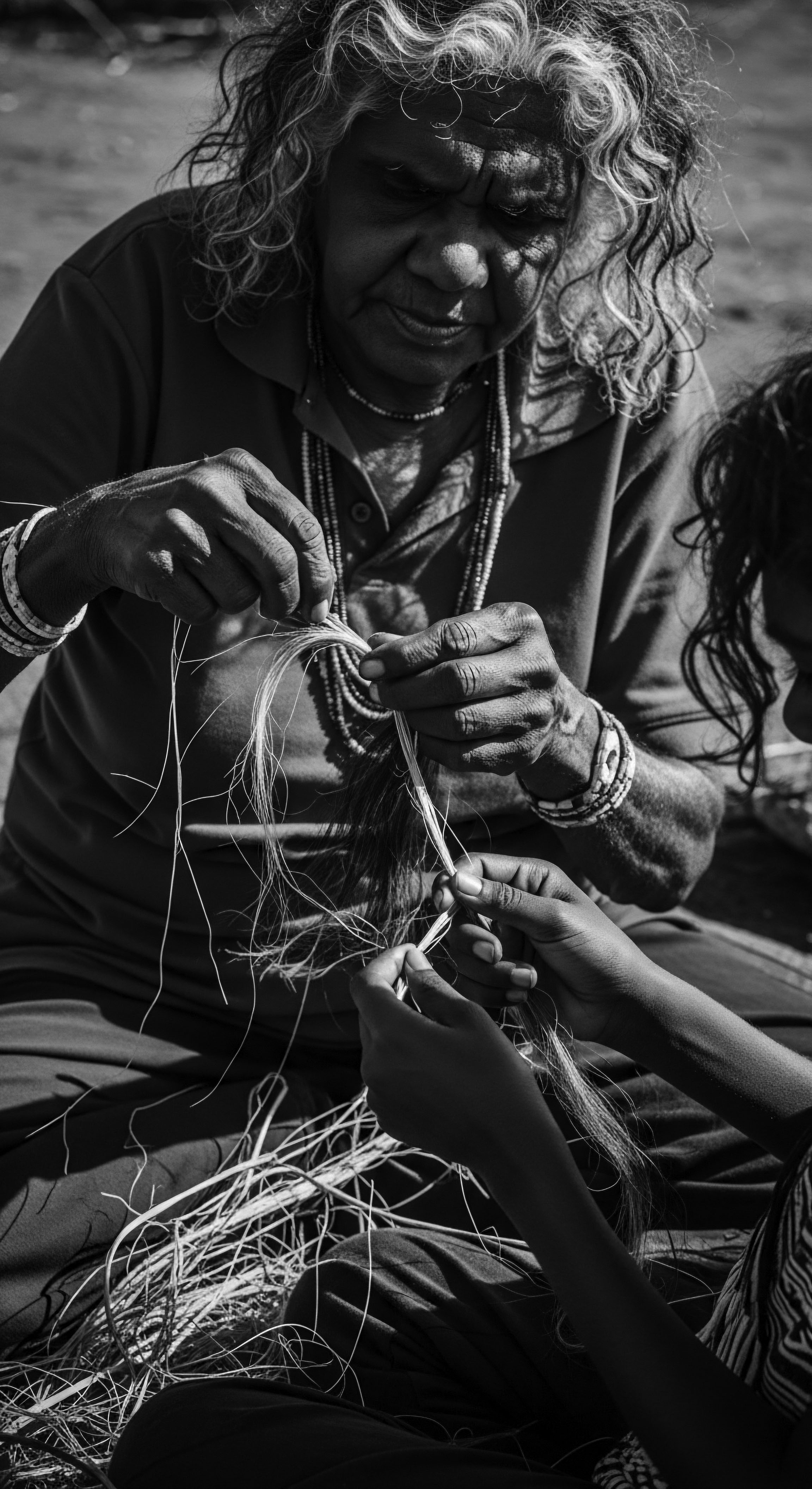
Intermediate
Moving beyond the fundamental delineation, Hair Discrimination Research at an intermediate level delves into the intricate mechanisms and societal implications of hair-based prejudice. This level of exploration offers a more detailed explanation of how discriminatory practices are perpetuated, often through subtle yet powerful means. It clarifies the social, psychological, and economic consequences experienced by individuals, particularly those within Black and mixed-race communities, whose hair expressions diverge from prevailing Eurocentric beauty standards. The meaning of this research expands to encompass the systemic nature of these biases, examining how they are woven into institutional policies, cultural norms, and individual perceptions, creating a pervasive environment of exclusion.
This deeper examination often involves analyzing the intersectionality of hair discrimination with other forms of bias, such as race, gender, and class. It seeks to provide a comprehensive understanding of how these overlapping identities amplify the experiences of prejudice. The research considers how individuals internalize these societal messages, impacting their self-esteem, identity formation, and choices regarding hair care and styling. It is a field that consistently asks ❉ how do historical injustices continue to shape contemporary experiences, and what are the specific ways in which hair becomes a battleground for identity and acceptance?
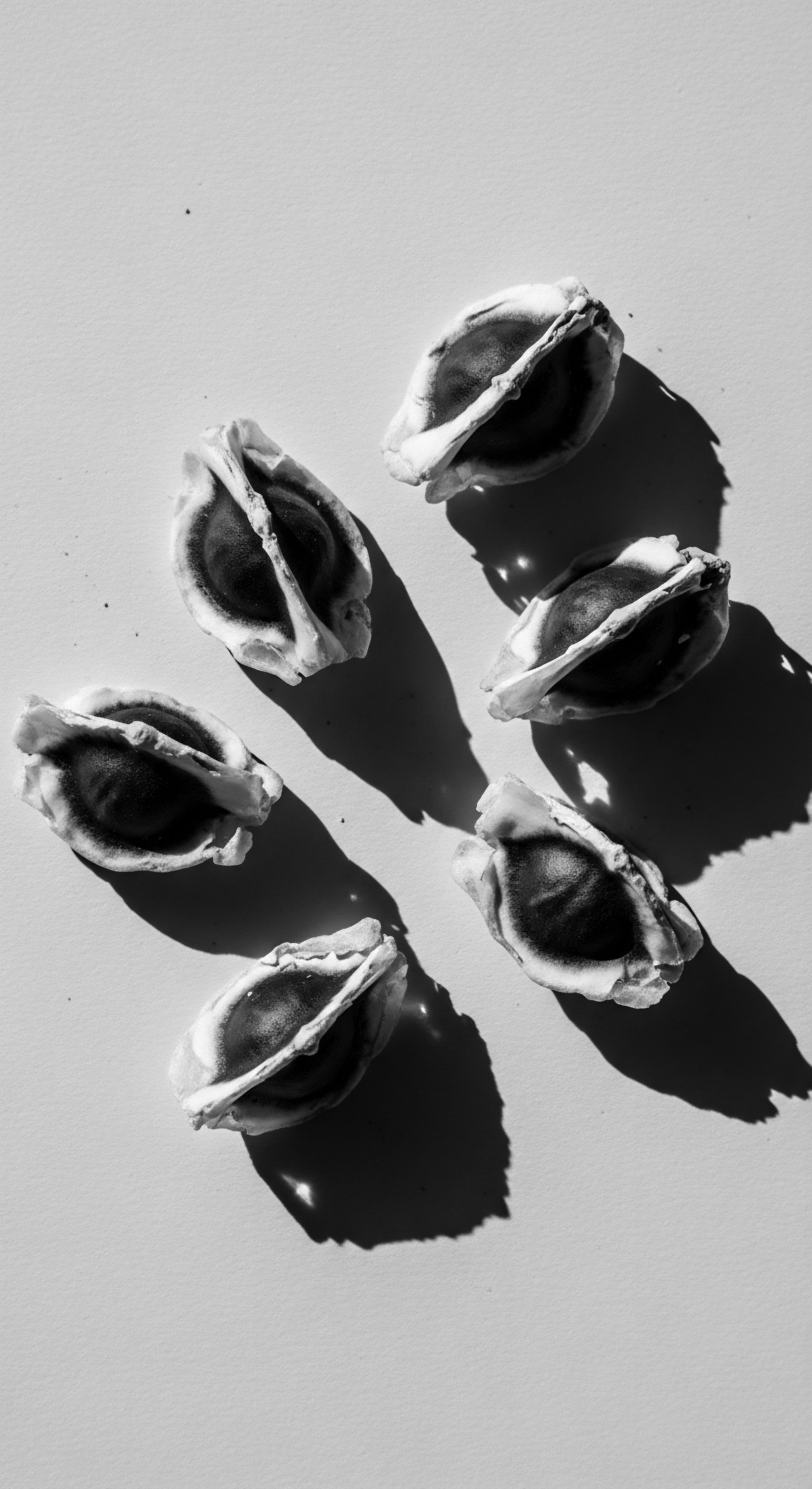
The Living Legacy of Textured Hair Heritage
The Hair Discrimination Research consistently acknowledges that for Black and mixed-race individuals, hair is far more than a biological attribute; it is a profound repository of heritage, memory, and cultural identity. Each coil, twist, and braid carries the echoes of ancestral practices, stories of resilience, and expressions of collective identity that span continents and centuries. This deep connection means that discrimination against textured hair is not merely an affront to personal style; it is an attack on a living heritage, a denial of ancestral wisdom, and a challenge to self-determination. The meaning of hair within these communities is multifaceted, encompassing spiritual beliefs, social markers, and artistic expression, all of which are impacted by discriminatory attitudes.
Understanding this heritage is essential to grasping the full significance of Hair Discrimination Research. Traditional hair practices, passed down through generations, often embody ancient knowledge of natural ingredients, intricate styling techniques, and communal rituals that strengthen familial and social bonds. When these practices are deemed “unprofessional” or “distracting” in modern settings, it represents a direct assault on a rich cultural lineage.
The research explores how the reclamation of natural hair styles becomes an act of resistance and a powerful affirmation of identity, a tender thread connecting the present to the past. This exploration provides a vital context for appreciating the depth of harm inflicted by hair discrimination and the profound healing that comes from cultural affirmation.
- Ancestral Hair Rituals ❉ Many African societies revered hair as a conduit to spirituality and a marker of status, age, and tribal affiliation. Intricate braiding patterns, often taking hours to complete, were not merely decorative; they conveyed social information and served as sacred rituals.
- Community and Connection ❉ Hair care was often a communal activity, particularly among women, providing spaces for storytelling, intergenerational teaching, and the strengthening of social ties. These shared moments reinforced cultural values and passed down knowledge.
- Herbal Wisdom ❉ Ancient practices incorporated natural ingredients like shea butter, various plant oils, and clays for cleansing, conditioning, and styling hair, demonstrating an intimate understanding of elemental biology and environmental resources.
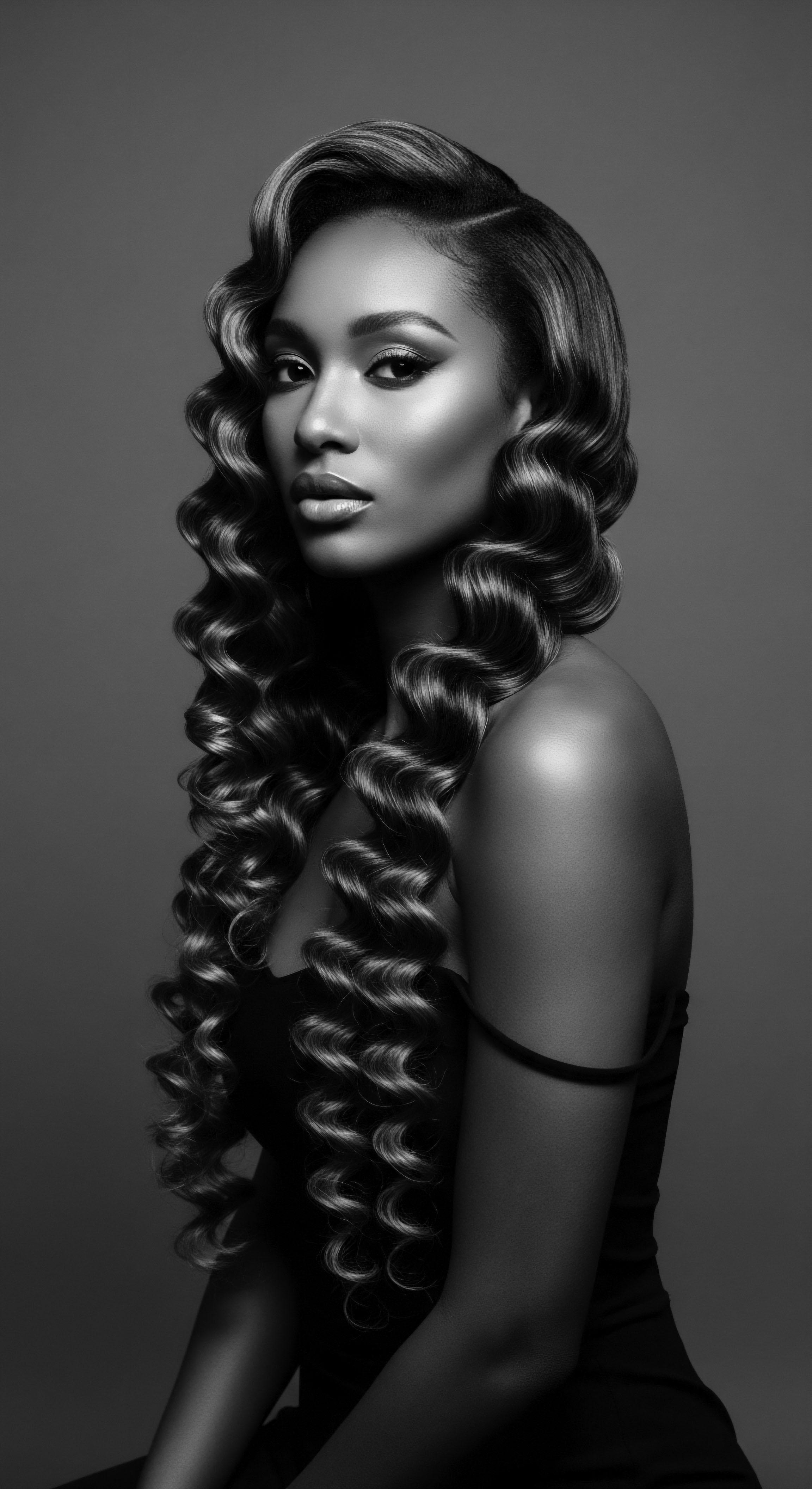
Impact on Self-Perception and Belonging
The pervasive nature of hair discrimination has tangible consequences for the mental and emotional well-being of those affected. Messages that devalue textured hair, whether overt or subtle, can lead to internalized biases, anxiety, and a diminished sense of self-worth. This can manifest as pressure to alter natural hair textures through chemical treatments or heat styling, processes that can be both physically damaging and psychologically taxing.
The research reveals how individuals, particularly Black women, often feel compelled to conform to Eurocentric beauty standards to avoid discrimination in academic or professional spaces. This constant pressure to assimilate can lead to chronic stress and a sense of cultural disconnection.
A significant body of work within Hair Discrimination Research highlights the profound emotional impact of these experiences. For instance, the Association of Black Psychologists describes hair discrimination as an “esthetic trauma,” noting its dire mental health effects. This trauma can result in internalized racism, anxiety about how others perceive one’s hair, and a reluctance to seek help due to shame or feeling misunderstood. The denial of one’s natural hair, a significant aspect of racial identity, can lead to a loss of self-expression and visibility.
This understanding of the psychological toll is central to the intermediate comprehension of hair discrimination, clarifying its deeper meaning beyond superficial appearance. The inquiry seeks to illuminate how such experiences contribute to feelings of marginalization and impact overall well-being, urging a shift towards environments that celebrate authentic self-expression.
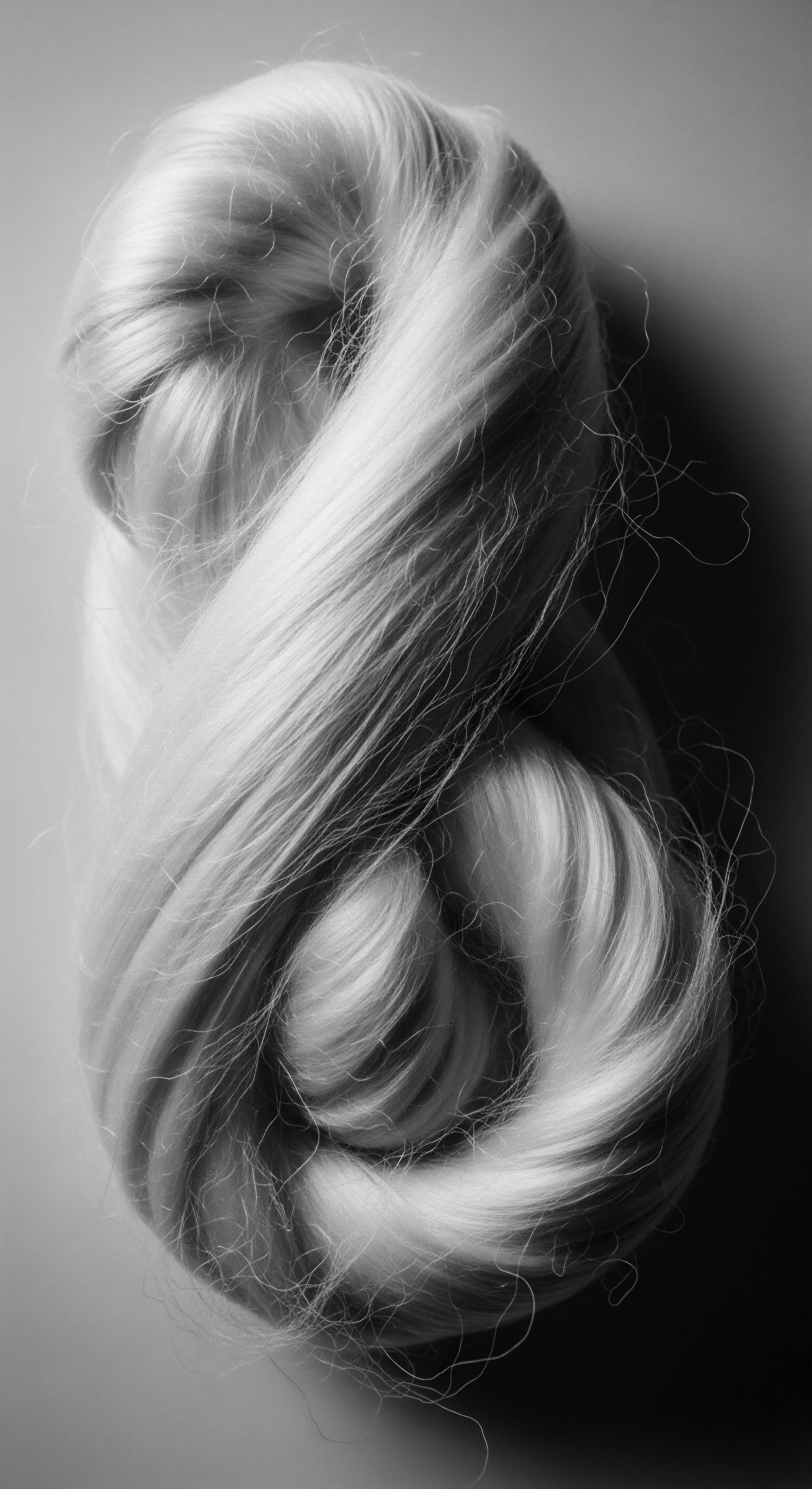
Academic
Hair Discrimination Research, from an academic vantage, represents a rigorous, interdisciplinary field dedicated to the systematic examination of prejudice, bias, and systemic disadvantage directed at individuals based on their hair characteristics, particularly those associated with textured hair. This scholarly pursuit delineates the intricate interplay of historical legacies, socio-cultural constructs, and power dynamics that render certain hair types and styles subject to scrutiny, policing, and exclusion. The meaning of this research extends to deconstructing the mechanisms through which Eurocentric beauty standards are normalized and enforced, often to the detriment of Black and mixed-race individuals whose natural hair defies these imposed norms.
It is a critical explication of how hair, a seemingly superficial aspect of appearance, becomes a profound site of identity, resistance, and social justice. This field of study, drawing from sociology, psychology, legal studies, anthropology, and public health, provides a comprehensive interpretation of hair discrimination’s origins, manifestations, and far-reaching consequences.
The academic delineation of Hair Discrimination Research scrutinizes both explicit policies and implicit biases that create barriers in educational, professional, and social spheres. It probes the historical antecedents of these biases, tracing their evolution from chattel enslavement and colonial subjugation, where the systematic devaluation of African aesthetics served as a tool of dehumanization, to contemporary microaggressions and institutional regulations. This scholarly investigation aims to clarify the long-term impacts on mental health, economic opportunity, and racial identity development, offering a robust understanding of the complex societal structures that perpetuate hair-based prejudice. The goal is to provide a comprehensive framework for understanding this pervasive issue, grounding its analysis in empirical data and theoretical constructs to inform effective advocacy and policy reform.
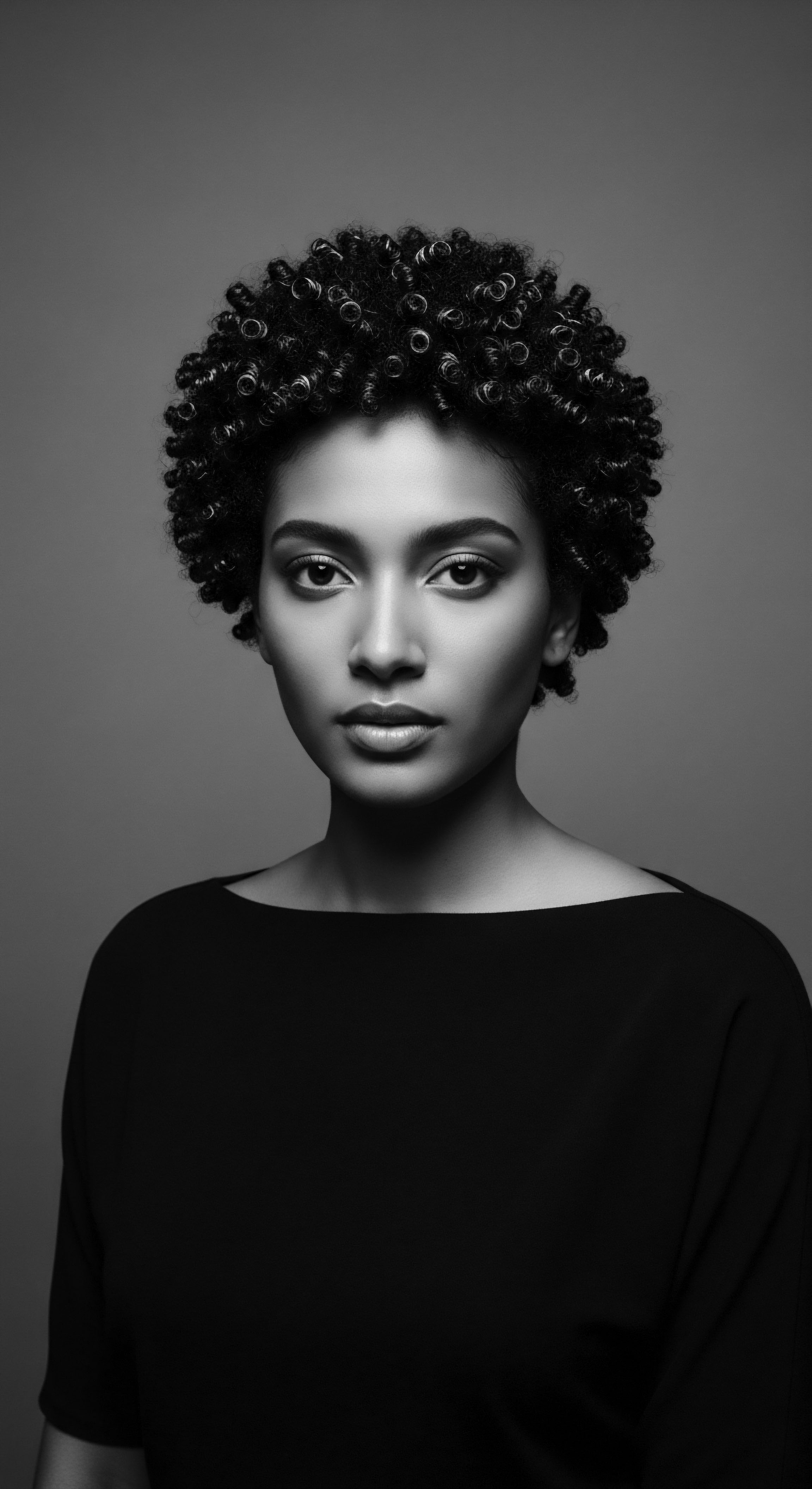
Deconstructing the Systemic Roots of Hair Bias
The academic study of hair discrimination necessitates a deep examination of its systemic origins, recognizing that such bias is not merely individual prejudice but a product of deeply embedded societal structures. The concept of “good hair” versus “bad hair,” a historical construct that equated desirability with proximity to European hair textures, remains a powerful, though often unspoken, force. This racialized beauty hierarchy, perpetuated through media, education, and employment practices, creates a subtle yet pervasive form of racial discrimination.
The research rigorously analyzes how these historical narratives are reinforced through cultural institutions, influencing perceptions of professionalism, intelligence, and social acceptability. It provides a detailed explication of how these historical biases are encoded into contemporary policies, often under the guise of “grooming standards” or “professional appearance.”
Scholars in this domain often scrutinize the intersection of race, gender, and class in shaping experiences of hair discrimination. For Black women, the burden of conforming to Eurocentric hair norms is particularly acute, as their hair becomes a nexus of racial and gendered expectations. This intersectional analysis reveals how the policing of Black hair is a unique form of oppression, distinct from the experiences of Black men or white women. The academic inquiry explores how this pressure to assimilate can lead to significant psychological distress, impacting self-esteem and racial identity development.
It is a critical examination of how power structures dictate acceptable forms of self-expression, particularly for marginalized communities. The academic meaning of hair discrimination is thus inextricably linked to broader discussions of social justice and equity.
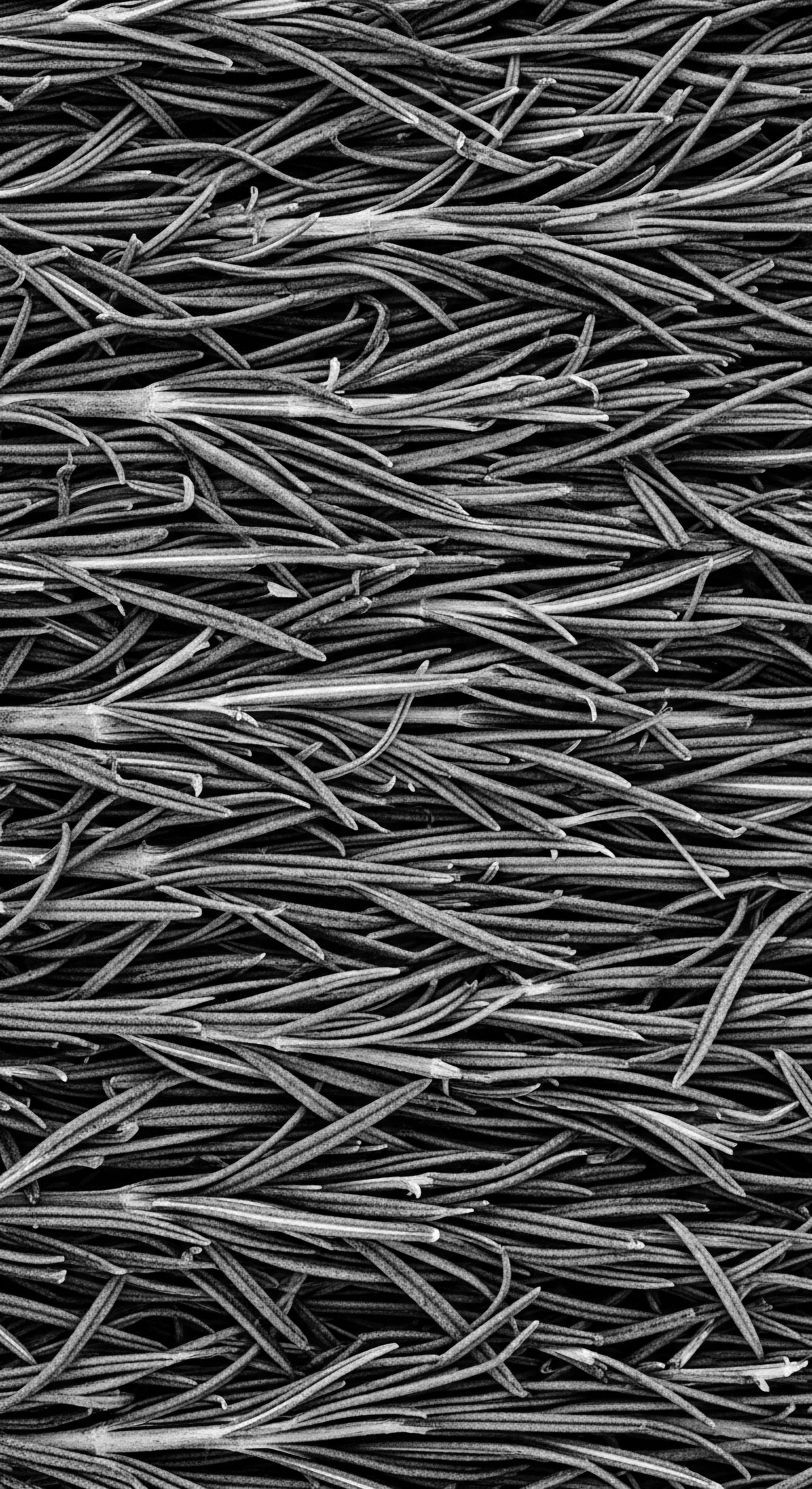
The Psychological Toll ❉ An Ancestral Weight
One profound area within Hair Discrimination Research focuses on the psychological ramifications, particularly for Black children and adolescents. The constant exposure to negative messages about their natural hair can lead to internalized racism, where individuals adopt the societal prejudices against their own hair textures. This internalization can manifest as anxiety, hypervigilance about how one’s hair is perceived, and a chronic stress response in environments where natural hair is policed. The meaning of self-acceptance becomes profoundly challenging when a fundamental aspect of one’s inherited identity is systematically devalued.
A study published in the journal Health Equity (Nkimbeng et al. 2023) discusses the mental and physical health implications of hair discrimination, situating it within the broader context of social determinants of health. This research highlights how hair discrimination can constrain individual choice and impact self-confidence and self-identity. The Association of Black Psychologists, for instance, has characterized hair discrimination as an “esthetic trauma,” emphasizing its severe mental health consequences.
Such trauma can lead to depression, withdrawal, and a reluctance to seek support due to feelings of shame or being misunderstood. This scholarly perspective underscores the enduring weight of ancestral biases on contemporary psychological well-being.
Consider the profound implications for racial identity development. For Black girls, hair is a strong staple of gender and ethnic identity. When they experience high rates of hair harassment and discrimination, their self-esteem is negatively impacted (Hussett-Richardson, 2023). This early exposure to bias, sometimes even within family settings due to internalized norms, teaches them that their authentic selves are somehow “inappropriate” or “unprofessional.” The research illuminates how this societal pressure to alter natural hair textures through chemical straighteners or heat styling, while seemingly a personal choice, is often a coping strategy to navigate discriminatory environments, with significant physical and psychological costs.
To provide a clearer delineation of how hair discrimination impacts well-being, we can examine key areas:
- Internalized Bias ❉ Individuals may adopt negative societal views of textured hair, leading to self-deprecating thoughts or feelings about their own natural hair. This internal conflict can undermine self-esteem and confidence.
- Anxiety and Stress ❉ The constant need to manage perceptions of one’s hair in professional or academic settings can lead to chronic stress and anxiety. The pressure to conform to Eurocentric beauty standards often necessitates time-consuming and potentially damaging hair treatments.
- Identity Erosion ❉ When a core aspect of one’s racial and cultural identity, such as hair, is consistently rejected, it can lead to a sense of disconnection from one’s heritage and a struggle to embrace an authentic self.
This scholarly inquiry extends to the economic disparities perpetuated by hair discrimination. Research suggests that Black applicants with Afrocentric hairstyles are often perceived as less professional and less likely to be recommended for an interview compared to those with Eurocentric hairstyles. This bias can limit job opportunities, hinder career advancement, and contribute to pre-existing socioeconomic inequalities.
The meaning of professionalism, as defined by dominant culture, often excludes natural Black hair, creating systemic barriers to economic mobility. The academic analysis of these phenomena reveals a complex web of social and economic injustices linked directly to hair appearance.
| Historical Context Tignon Laws (18th Century Louisiana) ❉ Legislation compelling Black women to cover their hair, aimed at diminishing their public status and beauty. |
| Mechanism of Discrimination Overt legal mandate to suppress visual markers of Black women's identity and status. |
| Contemporary Parallel School Dress Codes ❉ Policies banning specific natural hairstyles (e.g. locs, braids, Afros) deemed "distracting" or "unprofessional," disproportionately affecting Black students. |
| Historical Context Slavery Era Devaluation ❉ Systematic denigration of African hair textures as "unclean" or "unruly" to justify forced assimilation and dehumanization. |
| Mechanism of Discrimination Imposition of Eurocentric beauty standards as a tool of control and psychological subjugation. |
| Contemporary Parallel Workplace Grooming Policies ❉ Implicit or explicit expectations for straight hair, leading Black women to chemically straighten their hair to avoid bias. |
| Historical Context "Good Hair" vs. "Bad Hair" ❉ A social hierarchy within Black communities, often internalized, where hair resembling European textures was privileged. |
| Mechanism of Discrimination Internalized racism and colorism influencing self-perception and beauty ideals. |
| Contemporary Parallel Media Representation Bias ❉ Underrepresentation or negative portrayal of natural Black hair in mainstream media, reinforcing Eurocentric beauty norms. |
| Historical Context The enduring legacy of hair discrimination reveals a continuous struggle for self-acceptance and the affirmation of textured hair heritage across generations. |
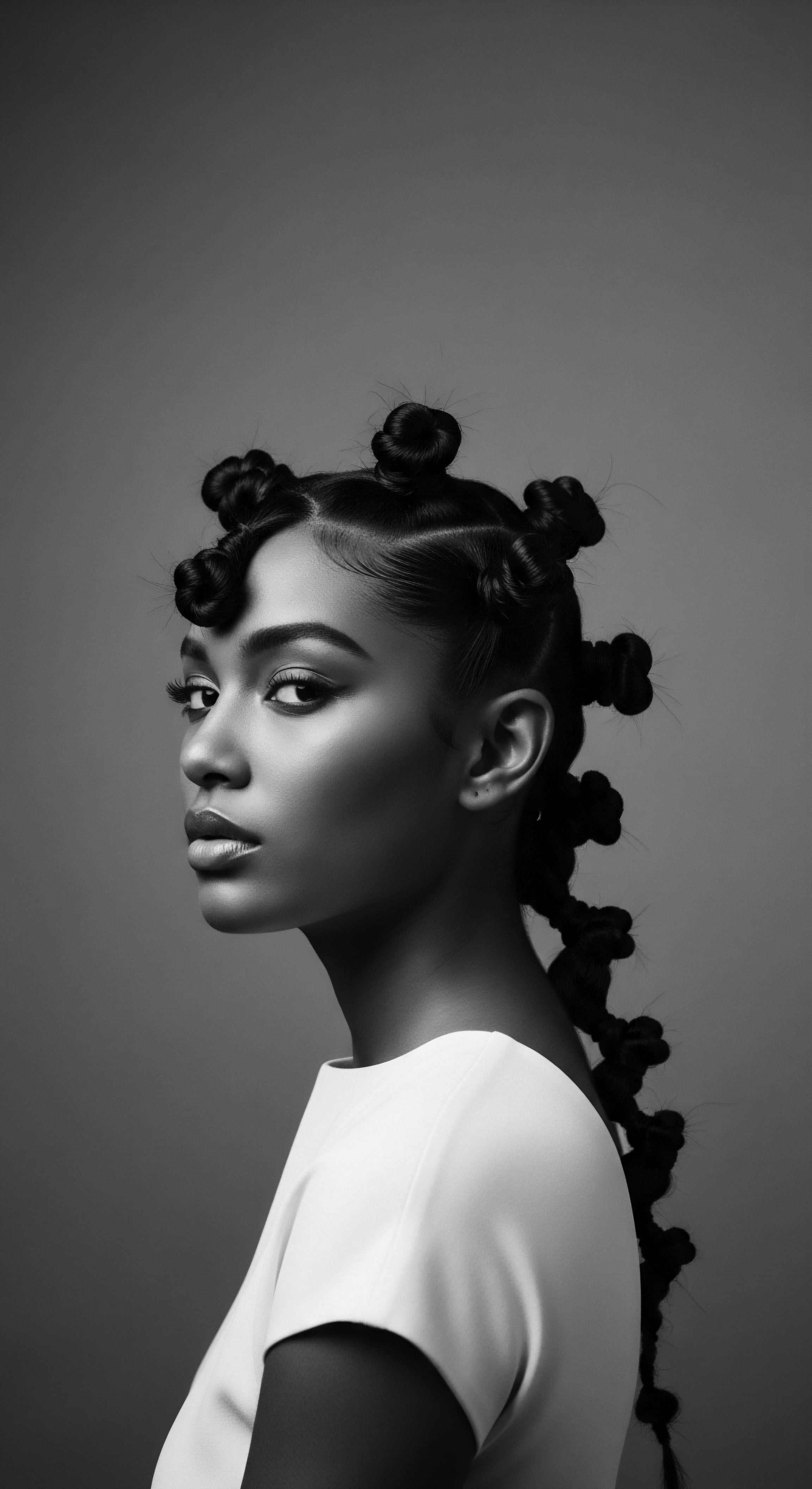
Advocacy and the Unbound Helix of Resistance
The academic exploration of Hair Discrimination Research is not merely descriptive; it is prescriptive, aiming to inform and propel advocacy efforts. The scholarship contributes to the development of legal frameworks, such as the CROWN Act (Creating a Respectful and Open World for Natural Hair), which seeks to protect individuals from discrimination based on their natural hair or hairstyles. This legislative movement, though recent, builds upon centuries of resistance and activism by Black communities striving for the freedom to express their authentic selves without fear of reprisal. The meaning of these legal protections is a recognition of hair as a fundamental aspect of racial identity and cultural expression.
Moreover, academic research plays a vital role in raising public awareness and challenging deeply ingrained societal biases. By providing empirical evidence of the prevalence and impact of hair discrimination, scholars contribute to a broader societal dialogue that can dismantle discriminatory norms. This scholarly pursuit supports educational initiatives aimed at fostering inclusivity and appreciation for diverse hair textures from an early age. The ongoing efforts to document, analyze, and challenge hair discrimination contribute to a larger movement towards cultural affirmation and equity, ensuring that the unbound helix of textured hair heritage can truly flourish without societal constraint.

Reflection on the Heritage of Hair Discrimination Research
The journey through Hair Discrimination Research, viewed through the Soul of a Strand ethos, is a profound meditation on the enduring spirit of textured hair heritage. This field of study is not a detached academic exercise; it is a resonant echo from the source, a tender thread connecting us to ancestral wisdom, and a vision for an unbound helix of future possibilities. It clarifies that hair, for Black and mixed-race communities, is more than a biological fiber; it is a living archive, a testament to resilience, and a vibrant expression of identity passed down through countless generations. The meaning of this research is deeply personal and universally significant, reminding us that respect for hair is respect for humanity’s diverse tapestry.
As we reflect on the historical burdens and contemporary challenges illuminated by this inquiry, we are invited to appreciate the profound strength embedded within every curl and coil. The ancestral practices of hair care, often born of necessity and deep botanical knowledge, now find affirmation in scientific understanding, revealing a continuous lineage of wisdom. This research stands as a beacon, guiding us towards a future where the rich heritage of textured hair is not merely tolerated but celebrated, where the freedom to wear one’s hair authentically is an undisputed right. It is a call to honor the past, understand the present, and collectively sculpt a world where every strand can truly thrive, unburdened by prejudice, radiating its inherent beauty and cultural significance.
The Soul of a Strand whispers that understanding hair discrimination is to honor the resilience and enduring spirit of textured hair heritage, guiding us toward a future of unbound self-expression.
The ongoing dialogue spurred by Hair Discrimination Research encourages a collective reimagining of beauty standards, moving away from narrow, exclusionary definitions towards a more expansive, inclusive vision. It is a powerful reminder that our hair carries stories, histories, and a profound connection to who we are, individually and collectively. The liberation of hair is, in essence, the liberation of self, allowing each person to stand in their full, authentic power, deeply rooted in their unique ancestral narrative. This scholarly endeavor, therefore, becomes a vital tool for fostering genuine equity and celebrating the inherent beauty of all human expression.
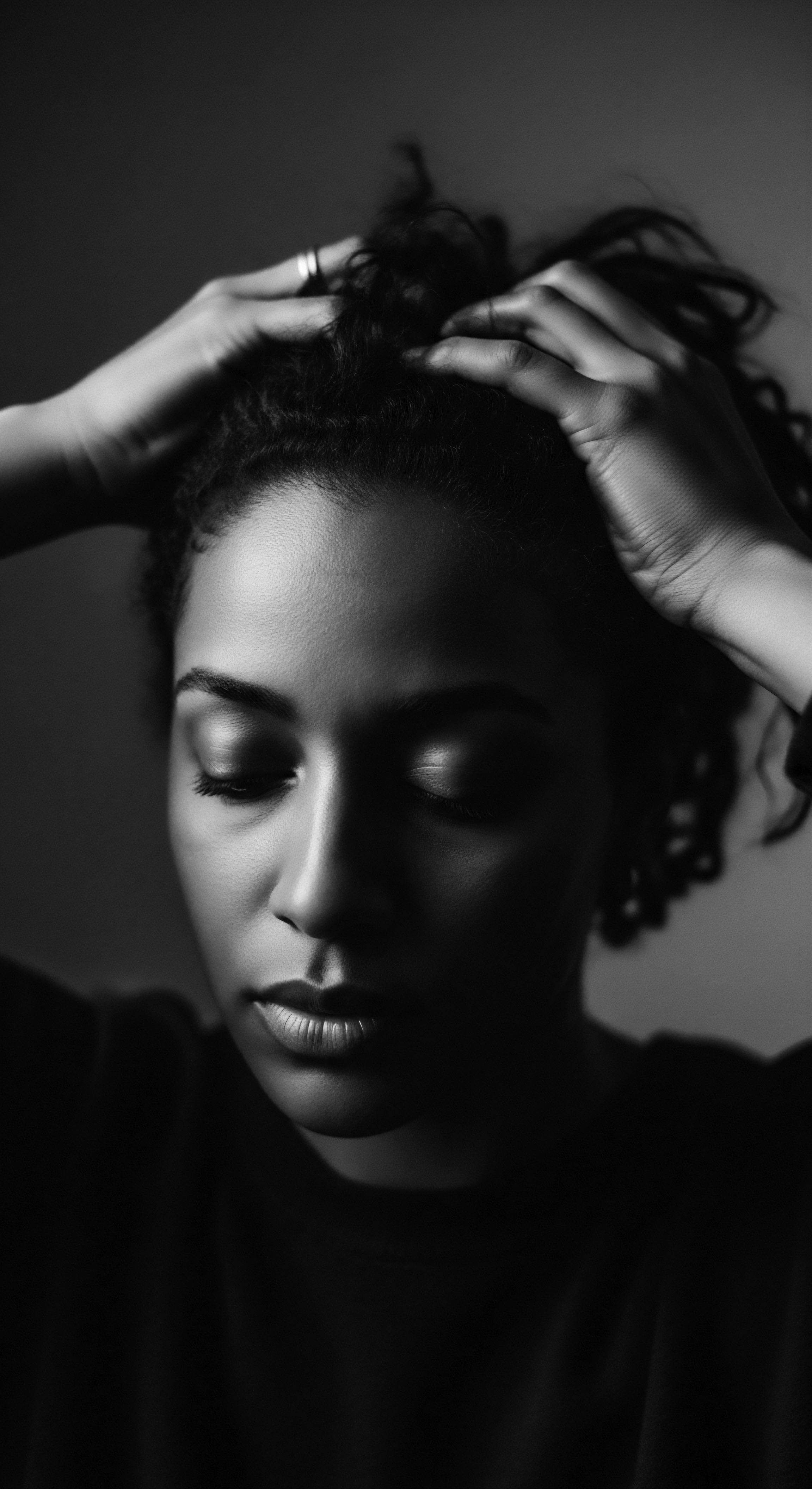
References
- Byrd, A. D. & Tharps, L. L. (2001). Hair Story ❉ Untangling the Roots of Black Hair in America. St. Martin’s Press.
- Hussett-Richardson, S. (2023). “Hair-Esteem Toolkit for Black Girls” ❉ The development of a self-esteem toolkit for Black adolescent girls centering hair as a tool for empowerment. Yale School of Public Health.
- Nkimbeng, M. & Dunbar, M. (2023). The Person Beneath the Hair ❉ Hair Discrimination, Health, and Well-Being. Health Equity, 7(1), 406-410.
- Sharpley-Whiting, T. D. (2007). Pimps Up, Ho’s Down ❉ Hip Hop’s Hold on Young Black Women. New York University Press.
- Robinson, C. L. (2011). Hair as race ❉ Why “good hair” may be bad for Black females. Howard Journal of Communications, 358(4), 376-711.
- Mbilishaka, A. M. Clemons, C. Hudlin, M. Warner, T. & Jones, A. (2020). Don’t Get It Twisted ❉ Untangling the Psychology of Hair Discrimination Within Black Communities. American Journal of Orthopsychiatry.
- Rosette, A. S. & Dumas, T. L. (2007). The hair dilemma ❉ Conform to mainstream expectations or emphasize racial identity. Duke Journal of Gender Law & Policy, 14(1), 407-421.
- Corson, R. (1995). Fashions in Hair ❉ The First Five Thousand Years. Peter Owen.
